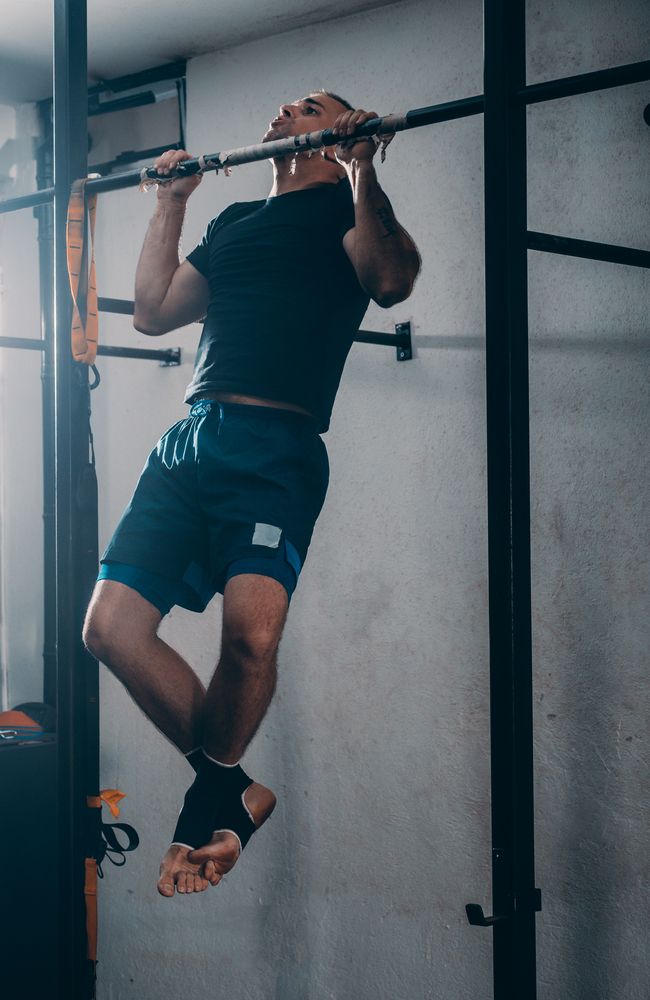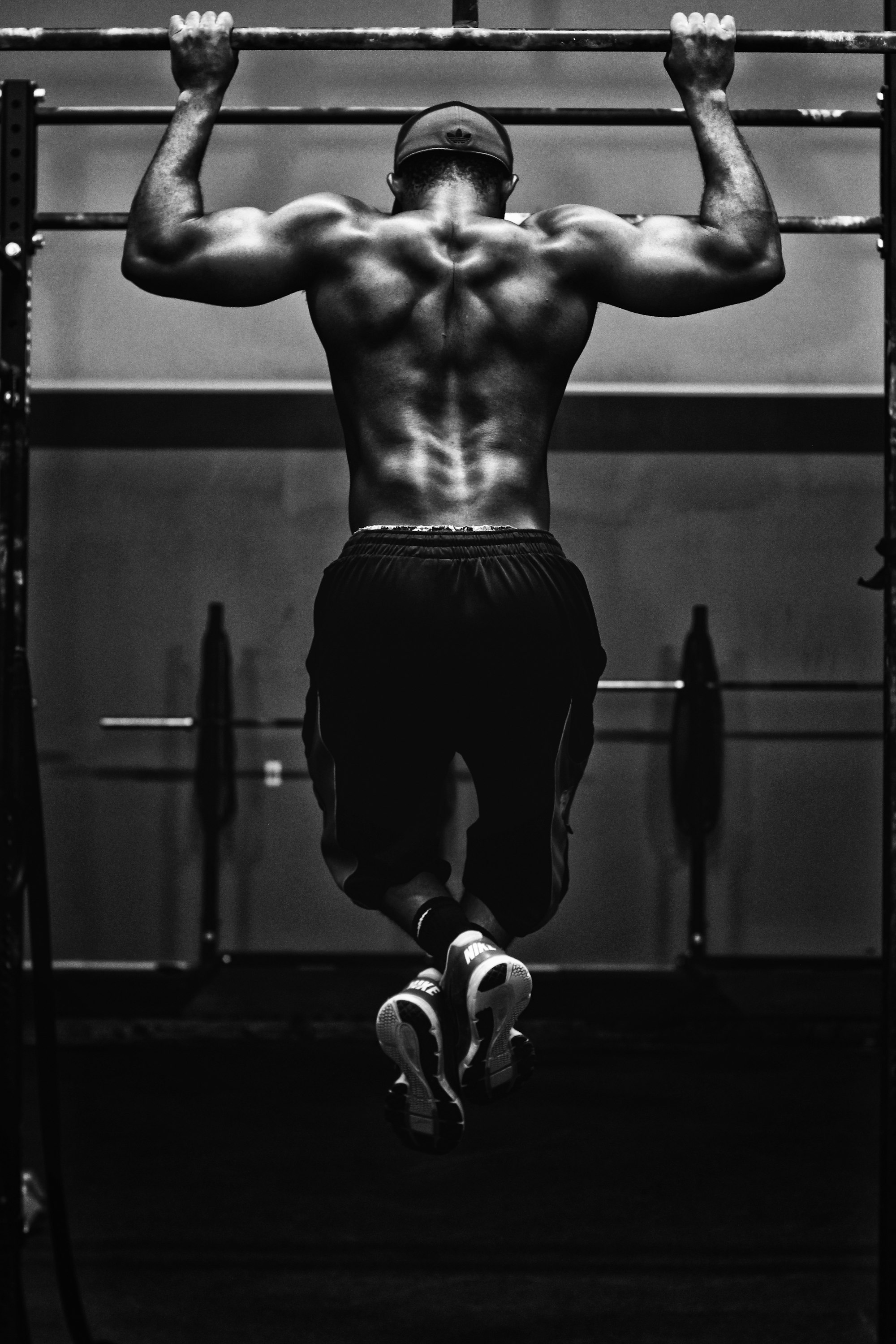There is some level of debate surrounding pull-ups. Some people say that they are one of the best exercises you can do, while others claim that they are dangerous and can cause injuries.
So, what's the truth? Are pull-ups good for you or not? In this blog post, we'll take a look at the pros and cons of pull-ups and see if they are right for you.
What Muscles Do Pull-Ups Work?
One of the main questions people have about pull-ups is what muscles they work. Pull-ups are a compound exercise, meaning they work multiple muscle groups at the same time.
The primary muscles that are worked are:
- latissimus dorsi (lats)
- biceps
- trapezius (traps)
However, other muscles such as the forearm, triceps, and pectoralis major (pecs) are also used.
How to Do Pull-Ups
Ok playas. Now that we know what muscles pull-ups work, let's take a look at how to do them properly.
- First, grab the bar with your palms facing away from you and your hands shoulder-width apart.
- Hang from the bar with your arms fully extended and your feet off the ground.
- Then, pull yourself up until your chin is over the bar.
- Lower yourself back down to the starting position and repeat.
It's important to keep your body as straight as possible throughout the exercise and to not swing or kip (use momentum to get your chin over the bar).
The Pros of Pull-Ups
Let's take a look at the pros of this time-honored exercise. The first pro is that they are an excellent compound exercise. As we mentioned before, pull-ups work multiple muscle groups at the same time. Additional pros:
- Pull-ups are very efficient and effective, especially if you're short on time.
- They are a great way to build strength. Pull-ups are one of the most challenging bodyweight exercises, so they are a great exercise to add to your routine if you're looking to build strength.
- Pull-ups are a great functional exercise. Functional exercises are exercises that mimic real-life movements. And since we often have to pull our own bodyweight around in real life, pull-ups are a great way to train your muscles for these types of movements.

The Cons of Pull-Ups
Now let's take a look at the cons of pull-ups. The first con is that they can be difficult to do. Others cons:
- If you're new to exercise or don't have a lot of upper body strength, you may find pull-ups very challenging.
- They can be dangerous if not done properly. If you swing or kip (use momentum to get your chin over the bar), you could put a lot of strain on your shoulders and elbows, which could lead to injuries.
- Pull-ups are not a very efficient exercise if your goal is to build muscle mass. If you're looking to add size to your upper body, you're better off doing exercises that work more isolated muscle groups such as the bench press or biceps curls.
Using a Pull-Ups Bar
Now that we've looked at the pros and cons of pull-ups, let's talk about how to use a pull-up bar. If you're new to exercise, it's always a good idea to start with your body weight before adding any additional weight. This will help you get used to the movement and ensure that you are doing the exercise properly.
If you are looking to add additional resistance, there are a few ways to do this. One way is to use a weight belt that goes around your waist. Another way is to hold a dumbbell between your feet. If you're using a weight belt or dumbbell, make sure that the weight is not too heavy as this could put too much strain on your muscles and lead to injuries.
Banded Pull-Ups
If you're struggling to do regular pull-ups, you can try using a resistance band. There are different types of resistance bands, so make sure you get one that is appropriate for your fitness level. To use a resistance band for pull-ups, loop the band around the bar and place your foot in the loop. Then proceed with the exercise as normal.

Additional Benefits of Pull-Ups
Aside from the pros and cons we've already mentioned, there are a few additional benefits of pull-ups that are worth mentioning.
Pull-ups are a great exercise for developing grip strength. Your hands and forearms have to work hard to hold on to the bar, which can help to develop grip strength.
They are also a great exercise for developing mental toughness. Pull-ups are challenging, both physically and mentally. So, if you can push through the pain and do them, it can help to develop mental toughness.
So, are pull-ups good for you? The answer is mostly yes and some no. Pull-ups are a great compound exercise that work multiple muscle groups at the same time. They are also very efficient and effective, especially if you're short on time. If you already enjoy a pretty good fitness level, pull-ups are definitely good for you— don't hesitate to add pull-ups to your workout routine.
However, they can be difficult to do and dangerous if not done properly. Abd if you're looking to add size to your upper body, you're better off doing exercises that work more isolated muscle groups such as the bench press or biceps curls.
If you're new to exercise, have any injuries, or are looking to build muscle mass, you may want to avoid pull-ups or consult with a doctor or certified personal trainer before adding them to your routine.
What are your thoughts on pull-ups? Are they a part of your workout routine? Let us know.


